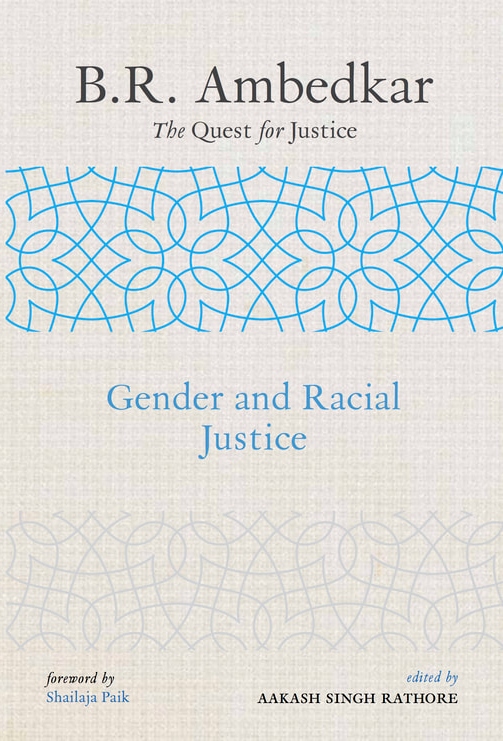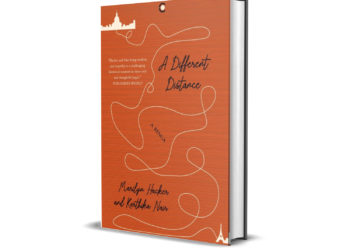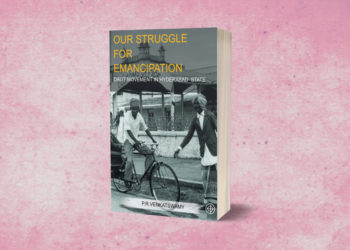“Quest for Equity: Reclaiming Social Justice, Revisiting Ambedkar” was the title of an international conference hosted by the government of Karnataka in 2017. The five-volume Quest for Justice, edited by Aakash Singh Rathore, presents 54 papers selected from the more than 350 that were read at the three-day event. Taking in biography, history, law, economics and contemporary politics in India and the world, the volumes have been organised under five themes: political justice, social justice, legal and economic justice, gender and racial justice, and, religious and cultural justice.
Casteism and racism are based upon enforced endogamy, which is why feminism has to be central to egalitarian movements, whether against caste or race. Volume 4 divides into two parts – gender justice and racial justice – examining Ambedkar as a feminist and his role, along with subsequent developments, in building solidarity, whether between the anti-caste struggle and that for women’s rights, or between the dalit and black political movements.
The following excerpts are taken from Moses Sreenarine’s “Organic Resistance: The Relevance of Ambedkar, Du Bois, and Garvey to Diaspora, Caste, Race and Women’s Liberation”.
Ambedkar: My Mentor at Columbia
Overseas South Asians constitute the world’s largest diaspora. I am part of this dispersion, born in Guyana, South America, six generations removed from South Asia. I am part of an Indo-Caribbean and US–South Asian population that numbers in millions. Though the diaspora includes thousands of Dalits, only a few will openly admit to being Dalit. There is a deep stigma that comes with being poor and lower caste in the diaspora, as in India.
I did not feel like an interloper growing up in South America since my ethnic group forms the majority in that country. I felt fairly normal until I encountered Indian merchants from South Asia in their stores, who acted superior to Guyanese Indians. I knew caste had something to do with it, but for the most part, I tried to ignore caste, hoping that it would go away.
My surname, Seenarine, is derived from an eighteenth-century south Indian Dalit group that advocated conversion and migration to free themselves from caste oppression in South Asia. I should have been pleased about my family’s long history of Dalit resistance, but instead I considered my Dalit surname name as a mark of disgrace. I preferred my mother’s Ahir family name, Satrohan, with its slightly higher-caste status.
Also read | Ambedkar and Democracy
My working-class family migrated to New York when I was 15, and I tried to distance myself from South Asians and Hinduism through Westernization. Being brown-skinned, I was treated like an African, and I identified as being part of the African diaspora. I studied the history of European colonialism and immersed myself in socialist philosophy. However, caste hung around my neck like a yoke. For example, I quickly became defensive whenever I encountered Hindus in the US. Far from camaraderie, I dreaded the ubiquitous question, ‘Where are you from?’, since it invariably revealed my ascribed low-caste identity.
I became the first on both sides of my family to graduate from college, an achievement I am proud of. I was educated, but still suffered from low self-esteem due to feelings and oppression related to caste and location in the diaspora. At the age of 30, I attended graduate school at Columbia University, determined to find out more about my Dalit heritage.
Columbia is a mostly European American institution and an emotionally sterile space. The South Asians I encountered on campus were upper caste and middle class. Upon learning about my diaspora origins, they acted like I was a clueless Dalit. I felt as much, and so began to research the history of caste and untouchability in South Asia.
You can imagine my surprise when I first learned about the name Ambedkar, the foremost authority on caste, and discovered that he had also attended Columbia 75 years ago. This encounter with Bhimrao Ramji Ambedkar (1891–1956) changed my life for-ever. I became reborn as an Ambedkarite immediately as I stood in the library staring at his books. Ambedkar’s mere existence, and his enormous political and social accomplishments, meant that I would never again feel disgraced simply for being a Dalit.
[…]
Plural Society or Melting Pot?
Diasporic South Asians are typically one among several minority groups in their home countries and have been the subjects of religious and racial prejudices. For decades, anthropologists have debated whether Indians in the diaspora are retaining Hindu customs or adapting to local cultures. Some point to the ongoing process of assimilation and ‘creolization’ occurring among overseas Indians in terms of language, dress, food habits, social customs, and so on. There are numerous advantages to blending in with the local culture, and second and third generation NRIs tend to socialize and intermarry with non-Indians more.
Also read | The power of counter-ritual
However, diaspora youth and adults face immense social pressures within their family and community to maintain caste, religious, national, and ethnic identities via dress, friendship, dating, marriage, and so on. In addition, they are larger structural forces that foster retention of Hinduism and casteism in the diaspora, and help to maintain Hinduism as a distinct culture in a plural society. There are variations in observance of Indian traditions, but the Hindu diaspora have resisted ‘creolization’ and merging into the melting pot of their home societies.
The low frequency of intermarriage with other religious and ethnic groups reflects cultural persistence and a separatist framework. Additionally, the retention of Hindu customs and casteism may have a strong influence on the NRIs race relations with the majority and other minority communities, and could be contributing to raising tensions among Indians and non-Indians.
The religion has been transformed in the diaspora into a homogenized form of Hinduism that outwardly claims the non-existence of caste. Although anthropologists argued, from the 1960s onwards, that the caste system cannot survive outside of South Asia, elements of caste do survive, such as: a tendency towards informal relations of superiority–inferiority; a sense of ‘difference’ among subgroups; family traditions of caste identity; and a preference for marriage within caste. Carolyn Brown (1981) has shown that in Fiji, as caste populations increase, so does the frequency of endogamy.
After fieldwork in Trinidad, Morton Klass (1960) argued that caste membership is the main determinant of status among rural Hindus on the Caribbean island. The American anthropologist noted that other important status indicators, such as income, wealth, occupation, and education, tend to cluster with claims of higher-caste membership. And, in rural Indo-Trinidad villages, claims of higher caste origins are made by leaders and wealthy residents alike.
In terms of politics, Klass (1960) examined the caste affiliations of Hindu members, from various parties, in the Trinidad Legislative Council. He observed that almost all of the legislators claimed membership in the two highest castes, Brahman and Kshatriya. The same is true for Mauritius, Guyana, Suriname, and other former indentured communities (Par n.d.). In Mauritius, there are the fourfold Maraze, Baboojee, Vaish, and Dusadh castes, as well as Chamars.
Even after six generations, many NRIs profess ‘awareness’ of their caste. Caste endures in the diaspora and along with it, casteism, the oppression of Dalits, and the marginalization of Dalit cultures. There is a close connection between class and caste privileges, and ‘Brahmins’ and maulavis (Islamic clerics) are held in high regard. Correspondingly, non-Brahmin priests are rare, and women priestesses rarer still. The Hindu diaspora are still embroiled in caste and Ambedkar’s call for its annihilation is as relevant to overseas Indians as it is to Indians in the motherland.
Ambedkar’s Relevance to Indian Diaspora
While the NRIs have been able to become highly successful in Western secular states, their sponsorship of religious nationalism is having the opposite effect in the subcontinent. Reinforcement of cultural and social boundaries is one of the main obstacles in the path to economic progress, and one sign is that entrepreneurs and corporations in India are small in comparison to those in China and other Asian countries.
Reinforcing the secular state and rolling back the move towards the right, culturally and politically, offers the NRIs an unprecedented economic opportunity in India, but their caste bias takes precedence over progress. In fact, the NRIs oversized influence may doom India into remaining a sink of ignorance and den of religious intolerance for decades to come. There are key social and political issues affecting diaspora communities that are ignored in the process as well.
Also read | Ambedkar and radical constitutionalism
Almost all overseas Indians face some form of race conflict in their countries of residence. Some examples of this are: the 1907 Bellingham riots against Indians in Washington in the US; the 1964 riots in Guyana; the 1972 expulsion of Indians from Uganda; the 1987 riot against Indians in Fiji; and the 2009 violence against Indians in Australia. These polarizing events point to the wide-spread and persistent nature of racial conflict facing the diaspora.
Three shootings in America during 2017 further reinforce the vulnerability of overseas Indians to bigotry in the West. The first one, in Kansas, involved a white army veteran who opened fire on two Indian tech workers in a bar, while shouting, ‘Go back to your country’. The second shooting involved a Sikh man in a Seattle suburb who was injured in his driveway after a gunman opened fire while yelling the same thing. In the third case, a South Carolina business owner was gunned down outside his house for no apparent reason (Dwyer 2017; Ismail 2017; PTI 2017).
Hindu supremacy and Indian national pride may be useful psychologically for the NRIs, but they do little else. The diaspora in the West need to recognize that they cannot pass for ‘white’ and may always be viewed as ‘untouchables’. For example, Romas have lived for over 1,000 years in Europe and are still considered ‘outsiders’. The NRIs are trapped within caste and regional boundaries and this limits vision of a way forward.
Ambedkar’s ideas of ‘liberty, equality, and fraternity’ can help the NRIs to build a bridge between different caste, religious, regional, and language groups, and with other non-Indian communities. In an undelivered talk, published as ‘Annihilation of Caste’ in 1936, Ambedkar writes; ‘fraternity… is only another name for democracy. Democracy is not merely a form of government. It is primarily a mode of associated living, of conjoint communicated experience. It is essentially an attitude of respect and reverence towards fellowmen’ (Ambedkar 1979[1936]: 24).





